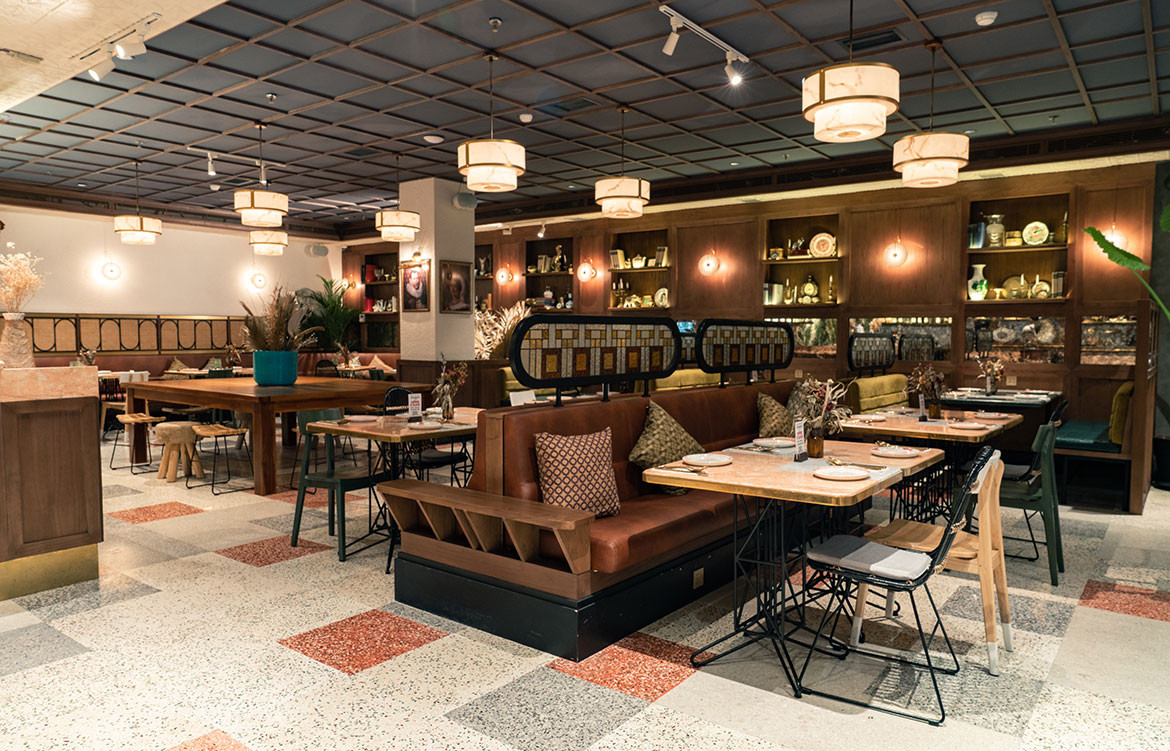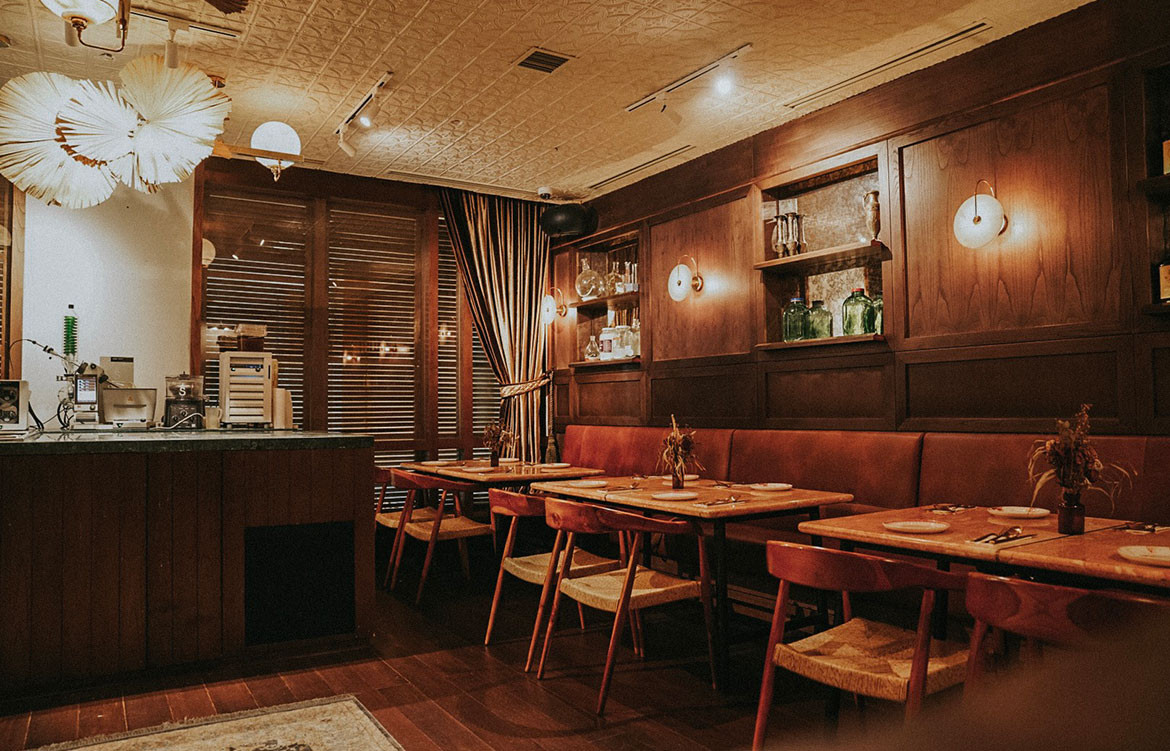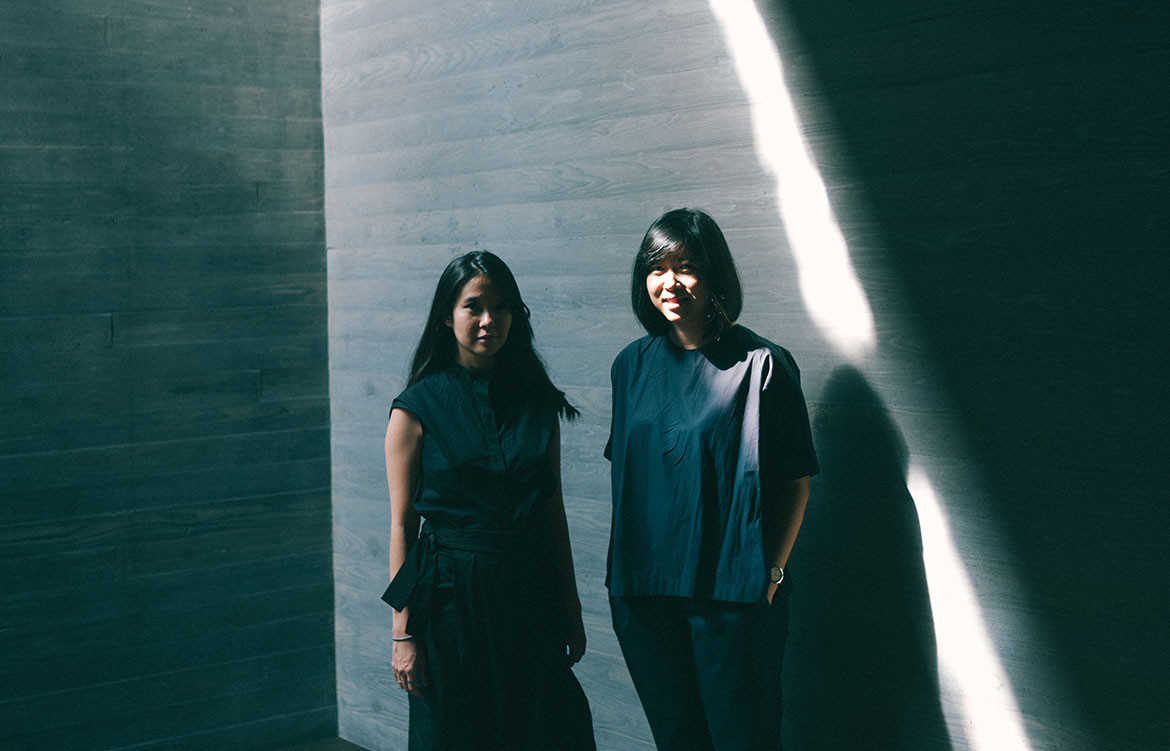I first met Bitte Design Studio at Osteria Gia where the ceiling, painted just the night before, was still being adjusted for the right shade of red. The restaurant had barely opened but business was brisk and the atmosphere enjoyably boisterous. After lunch, we took a short walk to Mr Fox, housed in a corner on the ground floor of an office tower.
Visiting it during off-peak hours presented the opportunity to examine some of its details. The detailing in the odd-shaped space is impressive. Although this was an older project completed in 2017, it felt fresh.
Like Osteria Gia, it was also a very comfortable space to stay in, a quality that is, unfortunately, missing in many new places that look nice through the screens of Instagram and Pinterest but disappoint when actually experienced. Both Osteria Gia and Mr Fox left a great impression on me.

Bitte was set up by peers Agatha Carolina and Chrisye Octaviani in 2012. They had been fellow architecture undergraduates at Parahyangan Catholic University and colleagues at andramatin studio. Today as creative partners they lead a team of five including three interior designers, a senior architect and a product designer to undertake a range of interior and architecture projects.
The team works out of a creative compound called The Lapan Office in Jakarta’s South Tangerang alongside branding and graphic design agency SOSJ, UI and UX developer Antikode, and Monstore, a clothing label that Carolina co-founded.
Work has been plenty for Bitte. Completions in the first half of this year have included an impressive number of residential, hotel and F&B projects such as Alchemist Anonymous, Arrack & Spice, Artotel Wahid Hasyim, Artotel Thamrin, Djournal Coffee & Pizza E Birra, and Osteria Gia. Outside of Jakarta, the studio also counts Rumours Bar and Grill in Bali, Magosaburo in Singapore, as well as Dragonfly KL and Black Byrd in Kuala Lumpur as new additions to their portfolio.

The hardworking studio is also busy developing a Bitte product line that will include seating, lighting, and other accessories.
Here are some snippets from my conversation with Carolina and Octaviani:
Bitte’s mission is to “create a sustainable space for people”. Tell us more about your approach.
Agatha Carolina (AC): In design, the most important thing is to research. The designer is a problem solver, we need to make sure the design will accommodate all the needs of the client. We also need to make sure that the design will be functional and sustainable for long-term use.
Chrisye Octaviani (CO): At the beginning of projects, we do research about the physical qualities and context of the site. We also find the early stages of any project is a critical time to talk with our clients, ask many questions, and most importantly, to listen. By learning about the site and listening to our clients, we hope that the outcomes can be fit with the context and the function.
Bitte has worked on so many hospitality concepts. What are some trends you see in our region today?
CO: At the moment, architecture and interior design are getting a lot more attention from many businesses. In the hospitality sector, people are not only looking at service, taste, quality, and the price of the food and drink, they are also looking for the right ambience.
We view this trend as a good opportunity for designers. But when the competition is high, you need to work hard in order to be a better designer.

How do you improve design skills?
CO: Listen to feedback, self-assess, ask questions, adjust, focus, and continue. We have to be willing to keep learning. We love having projects of varying scales and complexities within the studio. We find that the processes, explorations, and learnings from each project typology can help improve our skills.
In Indonesia, designers are leaving their jobs and setting up their own practices relatively early in their careers. How has this impacted the design profession?
AC: It is one of the concerns of our time. People are very exposed to social media, so it is very easy for people to set up their own business and tell the world about their works. This definitely has positive and negative impacts on the industry.
The positive thing is that the industry is growing rapidly. Many people are really aware of the importance of good design because they are exposed to so much information on social media.
However, one of the negative things about this is, as mentioned, designers are leaving their jobs and setting up their own practices relatively early because of the ease of creating a firm. Their lack of experience will impact the quality of the design.

We also talked about how this was due to low salaries of designers in Indonesia, as well as the wider trend of how entrepreneurship is attractive to millennials and Gen Z. You started Bitte after working at andramatin studio for two years.
Having gone down this road and achieving success with Bitte, what advice do you have for designers with similar aspirations, and, on the other hand, for studio directors facing challenges from the outflow of talent?
AC: Yes, salary is one of the biggest problems. The new generation tends to think ‘instantly’. Some even want to achieve success in the shortest time. This is causing entrepreneurship to boom in Indonesia. Everyone wants to have their own business.
We personally think that it’s a good problem to have. But, the thing that also needs to be considered is the responsibility behind it. Because sometimes we want to get more but we forget about the responsibility and effort behind each process.
CO: Our personal experience is that we started Bitte from the bottom. It is like walking on the staircase. We need to start from the very bottom to reach the top. That way we can appreciate more, and the most important thing is we can get more control of things because we’ve overcome all those steps before.
So our advice is, there’s no instant way to success. If you want to be successful there’s always a price to pay. It requires hard work, commitment, and persistence – never give up.
Bitte Design Studio
bitte-design.com
Images courtesy of Bitte Design Studio



We think you might also like Duck & Rice by Hogg & Lamb

